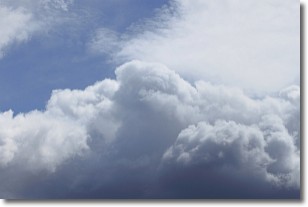Weather Alert in New Mexico
Flash Flood Warning issued August 26 at 2:00PM MDT until August 26 at 4:15PM MDT by NWS Albuquerque NM
AREAS AFFECTED: Lincoln, NM
DESCRIPTION: At 200 PM MDT, gauge reports indicated thunderstorms producing heavy rain over the Blue 2, South Fork and McBride burn scars. Between 0.25 and 1 inch of rain has fallen. The expected rainfall rate is 0.25 to 3 inches in 1 hour. Additional rainfall amounts of 0.25 to 0.5 inches are possible in the warned area. Flash flooding is already occurring. Excessive rainfall over the burn scar will impact the Rio Bonito, Eagle Creek, Cedar Creek and Rio Ruidoso drainages and potentially downstream along the Rio Hondo. Impacts will include but are not limited to all nearby reservoirs, bridges, culverts and roadways associated with these drainages, especially at those points where streams merge. Vulnerable properties in low lying areas are especially at risk. The debris flow can consist of rock, mud, vegetation and other loose materials. HAZARD...Life threatening flash flooding. Thunderstorms producing flash flooding in and around the Blue 2, South Fork, McBride and Salt burn scars. SOURCE...Gauges reported. IMPACT...Life threatening flash flooding of areas in and around the Blue 2, South Fork, McBride and Salt burn scars. Some locations that will experience flash flooding include... Ruidoso, Lincoln, Ruidoso Downs, Fort Stanton, Glencoe, Alto, Lincoln State Monument, San Patricio, Bonito Lake and Hondo. This includes Highway 380 between Mile Markers 91 and 107. Multiple roads have been closed. Vehicles have been impacted. Water rescues from vehicles have occurred.
INSTRUCTION: Turn around, don't drown when encountering flooded roads. Most flood deaths occur in vehicles. Be aware of your surroundings and do not drive on flooded roads. Shelter in place on high ground if you are on the north end of town near White Mountain Road.
Want more detail? Get the Complete 7 Day and Night Detailed Forecast!
Current U.S. National Radar--Current
The Current National Weather Radar is shown below with a UTC Time (subtract 5 hours from UTC to get Eastern Time).

National Weather Forecast--Current
The Current National Weather Forecast and National Weather Map are shown below.

National Weather Forecast for Tomorrow
Tomorrow National Weather Forecast and Tomorrow National Weather Map are show below.

North America Water Vapor (Moisture)
This map shows recent moisture content over North America. Bright and colored areas show high moisture (ie, clouds); brown indicates very little moisture present; black indicates no moisture.

Weather Topic: What are Nimbostratus Clouds?
Home - Education - Cloud Types - Nimbostratus Clouds
 Next Topic: Precipitation
Next Topic: Precipitation
A nimbostratus cloud is similar to a stratus cloud in its formless,
smooth appearance. However, a nimbostratus cloud is darker than a stratus cloud,
because it is thicker.
Unlike a stratus cloud, a nimbostratus cloud typically brings with it the threat
of moderate to heavy precipitation. In some cases, the precipitation may evaporate
before reaching the ground, a phenomenon known as virga.
Next Topic: Precipitation
Weather Topic: What is Rain?
Home - Education - Precipitation - Rain
 Next Topic: Shelf Clouds
Next Topic: Shelf Clouds
Precipitation in the form of water droplets is called rain.
Rain generally has a tendency to fall with less intensity over a greater period
of time, and when rainfall is more severe it is usually less sustained.
Rain is the most common form of precipitation and happens with greater frequency
depending on the season and regional influences. Cities have been shown to have
an observable effect on rainfall, due to an effect called the urban heat island.
Compared to upwind, monthly rainfall between twenty and forty miles downwind of
cities is 30% greater.
Next Topic: Shelf Clouds
Current conditions powered by WeatherAPI.com




